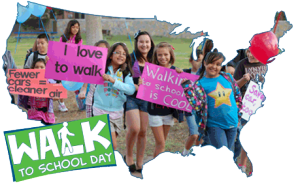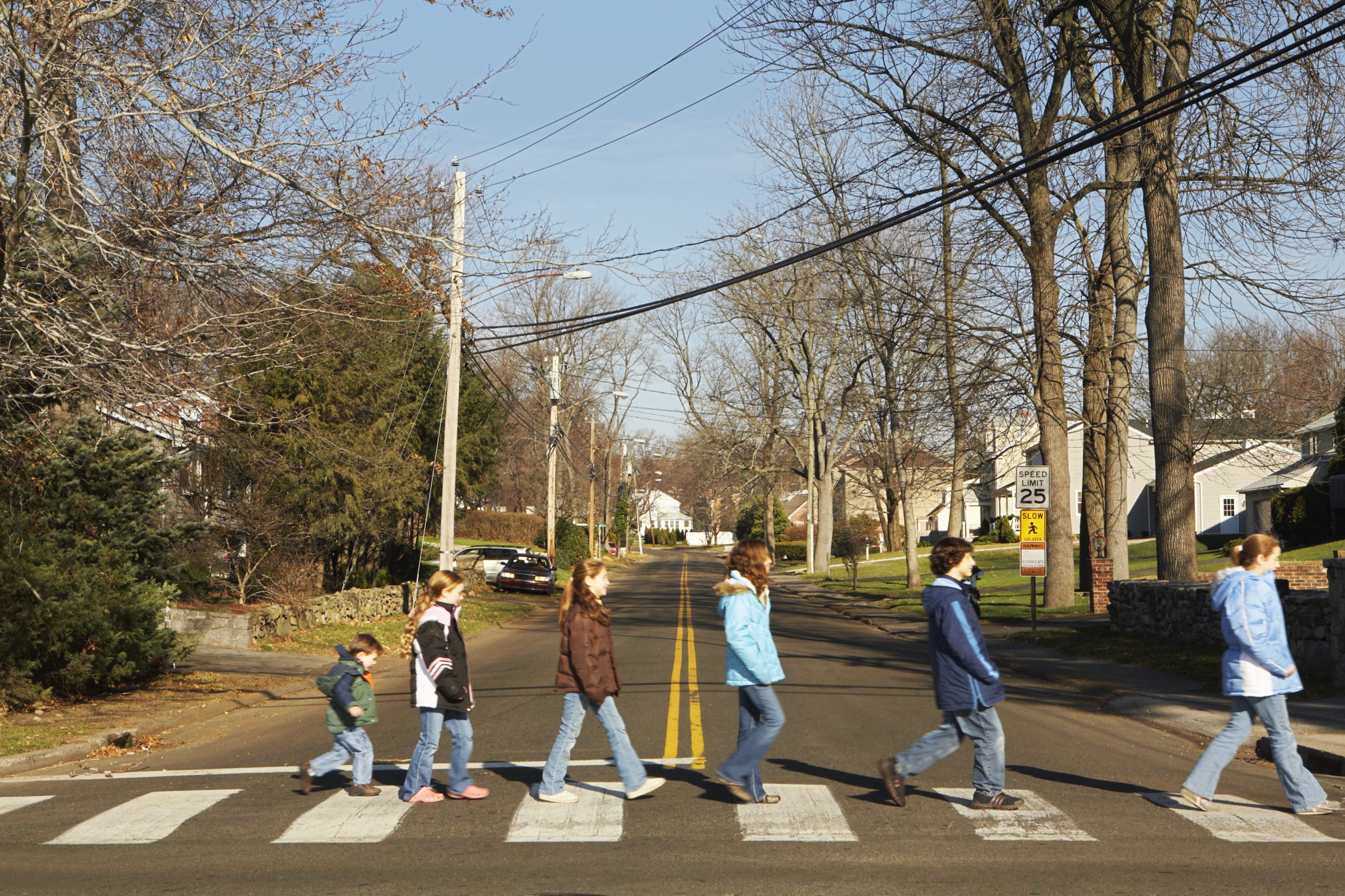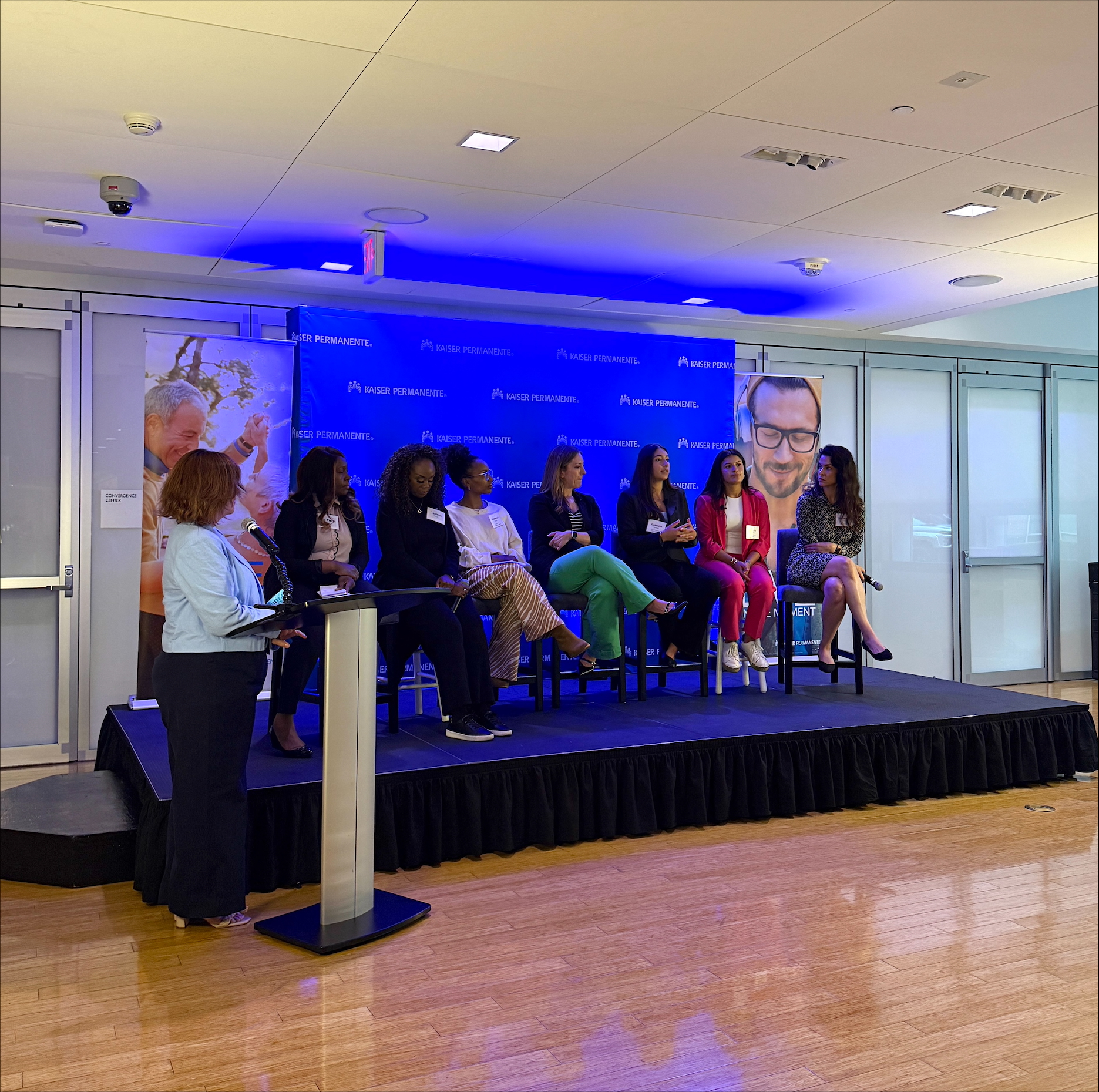How can we keep kids active year-round?
Today is Walk to School Day, the annual event that promotes of the power of walking to improve kids’ health and create more livable communities. Now in its 20th year, the day inspires thousands of students from all across the country to walk to school with their families and neighbors.
This is a cause for celebration. But Walk to School Day is only the first step toward a healthier future. To bring about lasting change, schools and communities need to keep the momentum going.
Formula for a sedentary lifestyle

Walking and biking to school was once the norm in many communities. But for an increasing number of Americans, travel by car and bus is a way of life. Add to that challenges like unsafe street crossings, speeding drivers and the absence of sidewalks in many neighborhoods, and it’s no wonder many parents choose to drive their kids to school or put them on the bus. Even when school is out, children are spending more time indoors, usually in front of screens.
A lack of daily physical activity is one reason why the childhood obesity rate has more than doubled in the past 30 years. Obese kids are at increased risk of developing chronic health conditions and of remaining obese as adults.
Steps toward a better way

Walking or biking to school is an easy way for children to make regular physical activity part of their day. Here are ideas from communities across the nation that have used Walk to School Day as a jumping off point for year-round efforts to keep kids moving.
- Start a walking school bus. Make walking to school safer by having kids walk to school together in small groups under the supervision of one or more adults. In Chicago, more than 175 schools participate in a walking school bus program created by the city and the police department. Learn more about starting a walking school bus.
- Create a tradition like “Walking Wednesdays.” A weekly or monthly walking event is a great way to keep the momentum going. Kids can walk to school or walk around the schoolyard together at a set time.
- Improve your neighborhood’s “walkability.” Walk to school with your children or students, and use this five-point neighborhood walkability checklist (pdf) to identify challenges along the way, such as blocked sidewalks, poor lighting and dangerous drivers. Next, identify short- and long-term solutions. In Clarkston, Georgia, the public works department repositioned a light and re-striped crosswalks after community members informed them of the hazards.
- Teach safe walking skills. This will not only make children better pedestrians — they’ll also be better drivers when the time comes. Walk to School organizers in Ocala, Florida, built a pedestrian obstacle course and asked children to demonstrate the safest response to each hazard.
- Address traffic hazards. Traffic congestion and speeding cars can make walking and biking to school dangerous. In Madison, Wisconsin, the SAFE KIDS Coalition worked with local traffic officers to get speed limits posted around schools. Schools in other areas have established drop-off zones a small distance away from school to relieve congestion at the main entrance.
Check out Walk to School Initiatives for more ideas.




